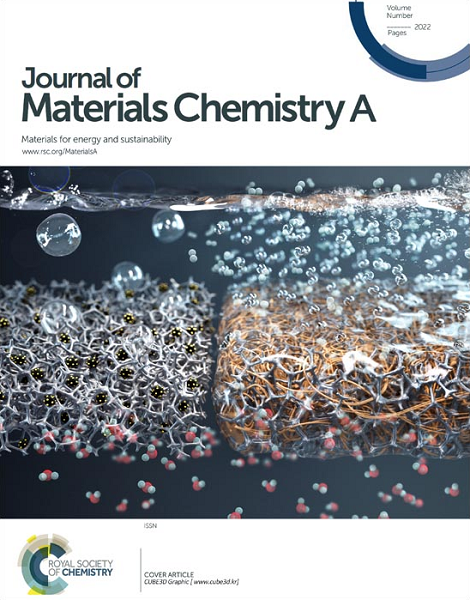Efficient preparation of high-toughness ionic conductors using in situ microphase-separation
IF 10.7
2区 材料科学
Q1 CHEMISTRY, PHYSICAL
引用次数: 0
Abstract
Ionic conductors are important materials for sensing devices owing to their excellent stretchability, conductivity, and transparency. However, it is extremely challenging to simultaneously achieve high tensile strength, fracture strain, and toughness in a dry ion conductor. In view of this, an acrylic acid (AA) and poly(ethylene glycol) dimethacrylate (PEGMA) based dry ion conductor (ISPSIC) with ultra-high mechanical performance is developed by an efficient one-pot method. By utilizing PEGMA to construct microphase-separated regions within the polymer network of the traditional poly(AA–ChCl) type supramolecular deep eutectic polymer, the ISPSIC can enhance the tensile strength of the dry ion conductor by 252.74% with only 0.43% PEGMA content, with no loss of tensile strain. Benefiting from the advantages of the in situ microphase-separation structure, this dry ion conductor exhibits remarkably high tensile strength (77.77 MPa), tensile strain (505.43%), toughness (232.70 MJ m−3), transparency (>90%), and electrical conductivity (6.7 × 10−5 S m−1). Notably, the relative resistance variations of the ISPSIC are greater than 800% and can be electrohealed up to 98.5% within 0.03 s. This work provides a reliable method for further tuning the microstructure and high performance of ionic conductors during polymerization.

利用原位微相分离高效制备高韧性离子导体
离子导体具有出色的拉伸性、导电性和透明度,是传感设备的重要材料。然而,要在干离子导体中同时实现高拉伸强度、断裂应变和韧性是极具挑战性的。有鉴于此,一种基于丙烯酸(AA)和聚(乙二醇)二甲基丙烯酸酯(PEGMA)的具有超高机械性能的干离子导体(ISPSIC)通过高效的一锅法研制成功。通过利用 PEGMA 在传统聚(AA-ChCl)型超分子深共晶聚合物的聚合物网络中构建微相分离区域,ISPSIC 在 PEGMA 含量仅为 0.43% 的情况下可将干离子导体的拉伸强度提高 252.74%,且无拉伸应变损失。得益于原位微相分离结构的优势,这种干离子导体表现出了极高的抗拉强度(77.77 MPa)、拉伸应变(505.43%)、韧性(232.70 MJ m-3)、透明度(90%)和导电率(6.7 × 10-5 S m-1)。值得注意的是,ISPSIC 的相对电阻变化率大于 800%,并可在 0.03 秒内电愈合至 98.5%。这项工作为在聚合过程中进一步调整离子导体的微观结构和高性能提供了可靠的方法。
本文章由计算机程序翻译,如有差异,请以英文原文为准。
求助全文
约1分钟内获得全文
求助全文
来源期刊

Journal of Materials Chemistry A
CHEMISTRY, PHYSICAL-ENERGY & FUELS
CiteScore
19.50
自引率
5.00%
发文量
1892
审稿时长
1.5 months
期刊介绍:
The Journal of Materials Chemistry A, B & C covers a wide range of high-quality studies in the field of materials chemistry, with each section focusing on specific applications of the materials studied. Journal of Materials Chemistry A emphasizes applications in energy and sustainability, including topics such as artificial photosynthesis, batteries, and fuel cells. Journal of Materials Chemistry B focuses on applications in biology and medicine, while Journal of Materials Chemistry C covers applications in optical, magnetic, and electronic devices. Example topic areas within the scope of Journal of Materials Chemistry A include catalysis, green/sustainable materials, sensors, and water treatment, among others.
 求助内容:
求助内容: 应助结果提醒方式:
应助结果提醒方式:


